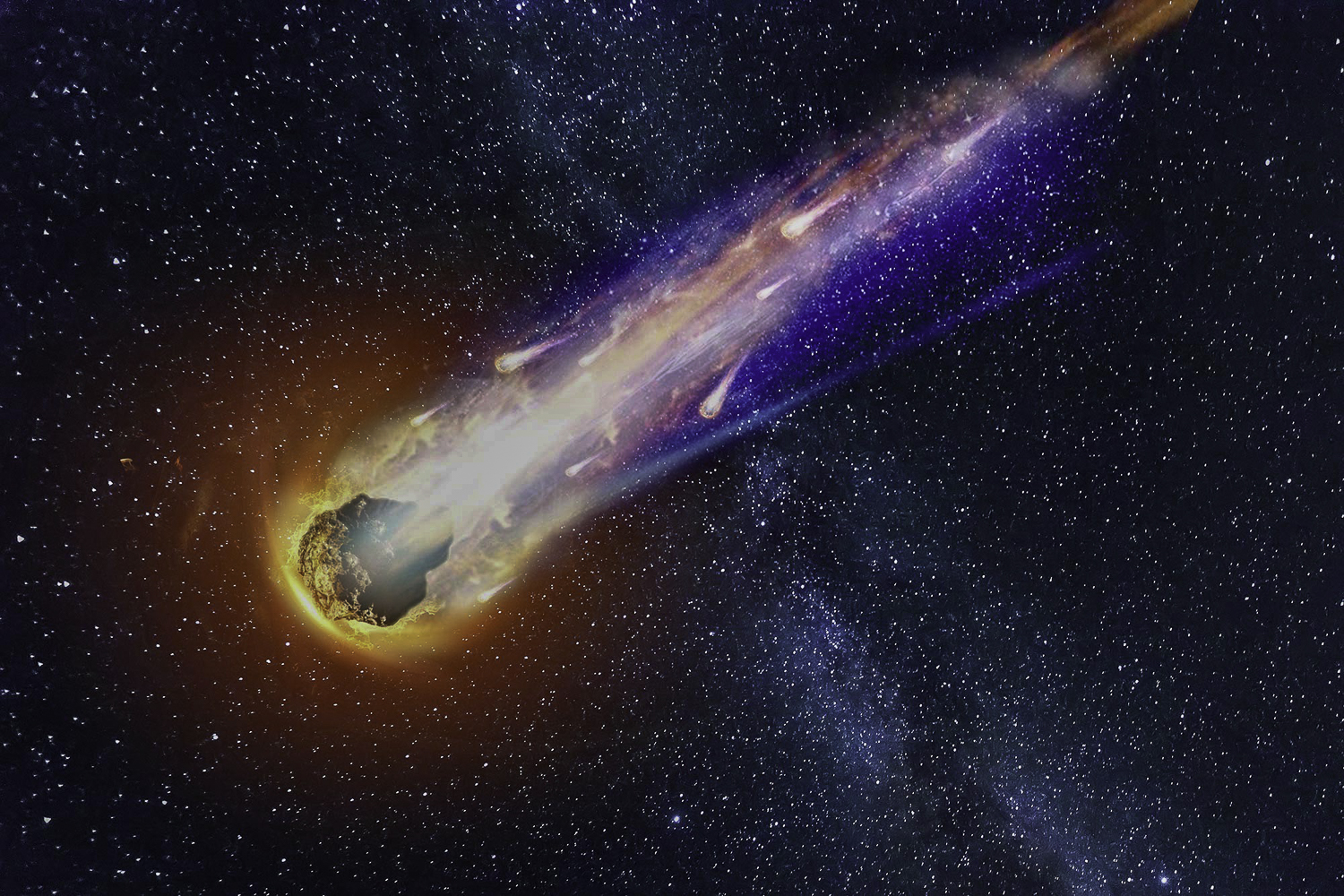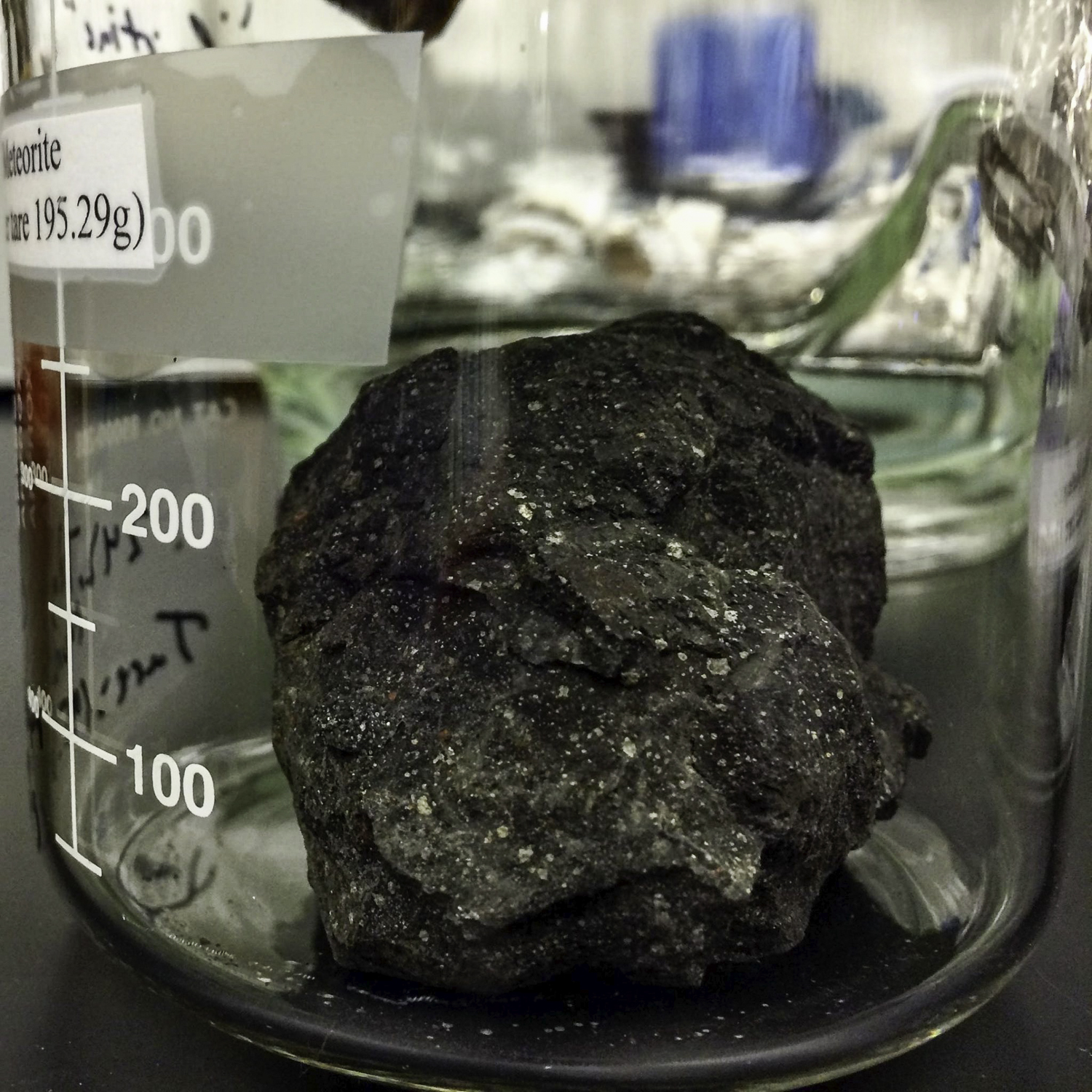ePostcard #131: Glass in Nature (Part 6)
Photo Credits: Artist’s conception of meteorite courtesy of researchers from Tohoku University, Hokkaido University, JAMSTEC, and NASA Goddard Space Flight Center.
A research team from Japan and the USA investigated carbon-rich meteorites and found ribose and other sugars. These sugars possessed distinct carbon-isotope compositions, differing from terrestrial biological sugars, and confirming their extraterrestrial origin. The results suggest that the sugars formed in the early solar system and made their way to Earth via meteorites.
CHEMISTRY OF LIFE: CARBONACEOUS METEORITE FOOTPRINTS
We know that the chemistry of life runs on organic compounds—molecules containing carbon and hydrogen, but also oxygen, nitrogen, silica and a host of other elements. Understanding how these organic compounds found their way to our planet has been the subject of intense research for the last two decades. While commonly associated with life, organic molecules can also be created by non-biological processes and are not necessarily indicators of life. Thanks to the exciting astro-biological research on meteorite composition now underway, we know that organic molecules formed in extraterrestrial environments played a key role in providing the building blocks for life on Earth.
Researchers from Japan and the USA have now confirmed the presence in carbonaceous meteorites of a key organic molecule that may have been useful in building other organic molecules. The research team, led by Dr. Yasuhiro Oba from Hokkaido University, discovered the presence of a prebiotic organic molecule called hexamethylenetetramine (HMT) in three different carbon-rich meteorites. Their discovery, published in the journal Nature Communications, validates models and theories that propose HMT as a key molecule in the formation of organic compounds in interstellar environments.
Photo Credit: Daniel P. Glavin. A fragment of the Murchison meteorite, one of the three carbon-rich meteorites that was sampled in this study.
By confirming the presence of HMT in meteorites for the first time, the research supports the hypothesis that the compound was present in asteroids, the parent bodies of many meteorites. Early in the solar system’s history, many asteroids could have been heated by collisions with other extraterrestrial bodies or the decay of radioactive constituents. If some asteroids were warm enough and had liquid water, HMT could have broken down to provide the molecular building blocks for other important biological molecules that have been found in meteorites, including amino acids. Some types of amino acids are used by life to make proteins, which are used to build structures like hair and nails, or to speed up and regulate chemical reactions. While the diversity of organic compounds in meteorites is well-documented, many questions remain about the processes by which these compounds were formed.
Reference: “Extraterrestrial hexamethylenetetramine in meteorites—a precursor of prebiotic chemistry in the inner solar system” by Yasuhiro Oba, Yoshinori Takano, Hiroshi Naraoka, Yoshihiro Furukawa, Daniel P. Glavin, Jason P. Dworkin and Shogo Tachibana, 7 December 2020, Nature Communications. DOI: 10.1038/s41467-020-20038-x
A Note to Readers: Some of you may be wondering about the seemingly dendritic path I’ve pursued in following the trail of silica in our series “Glass in Nature.” Understanding how the Earth evolved over billions of years and the complex chemical reactions—the building blocks for life (both inorganic and organic)—that ultimately gave rise to our amazingly biodiverse “Blue Planet” is difficult to condense into sound bites. One discovery leads to another—and another and another even in the abridged version. As a naturalist, my goal with this series has been to unravel the complexity of the story in a way that captures my own excitement as I read the research and wander the discovery trail …
To help build global awareness, we would appreciate it if you would share this post with your friends and colleagues. Please choose one of the options below which includes email and print! Thank you.


